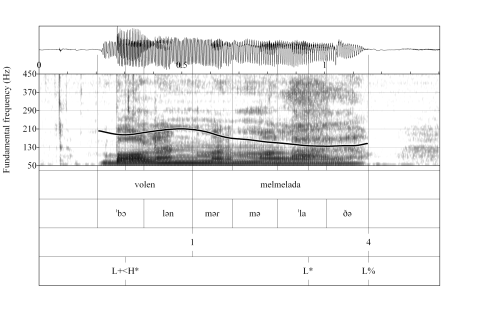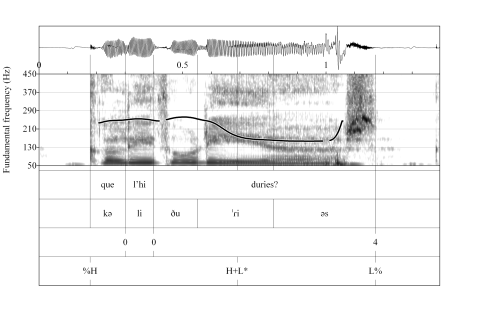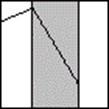L*

This pitch accent is phonetically realized as a low plateau. It is generally realized as a local pitch minimum in the speaker’s range.
H+L*

This pitch accent is phonetically realized as a fall within the accented syllable. The start of the fall is aligned with the beginning of the accented syllable and the end of the fall is aligned (roughly) with the end of the stressed syllable.
Example L*: Broad focus statement
Example H+L*: Falling yes-no question
Volen melmelada
[They want some jam]

Que li'hi duries?
[Would you take it to him/her?]

Explanations
In the first example, the nuclear pitch accent is L*: it is realized as a low plateau.
In the second example, the pitch is high up until the last stressed syllable, during which it falls. There is an F0 turning point at the beginning of this syllable, which corresponds to a high target, and then there is a low target at the end of the syllable. This pitch accent is H+L*.
If acoustically both L* and H+L* are perceived as low, the difference between these two pitch accents is that in H+L*, there is a high target at the beginning of the accented syllable and pitch falls during it, whereas in L*, the F0 stays at a low level from the previous syllable until the next syllable.







